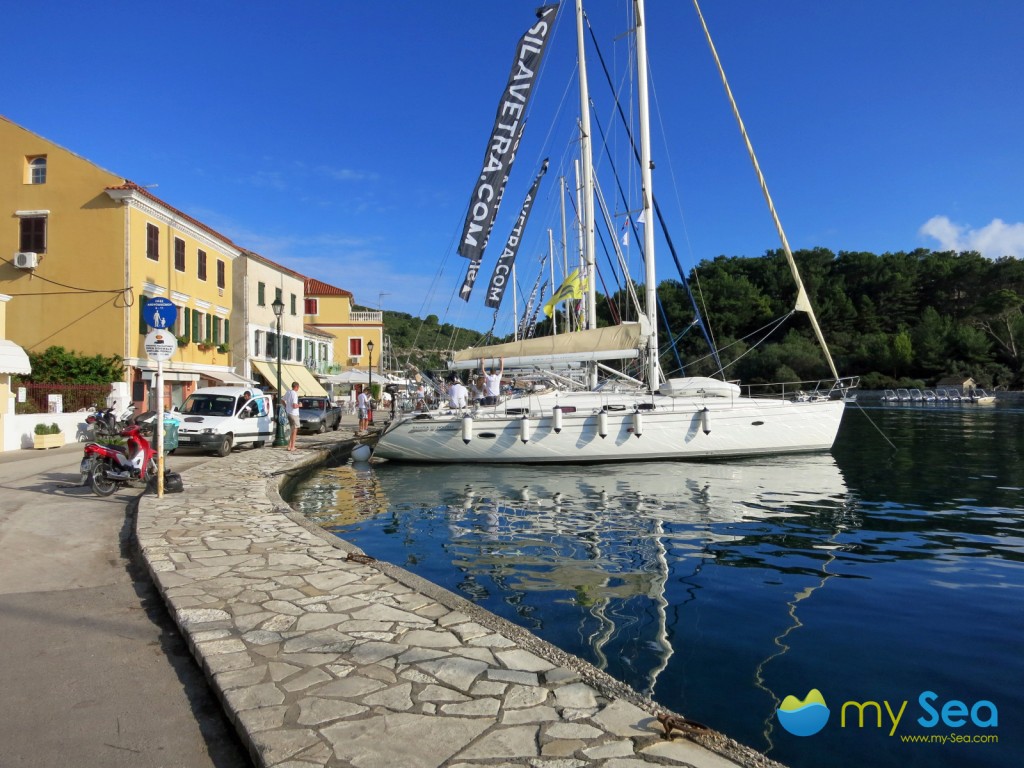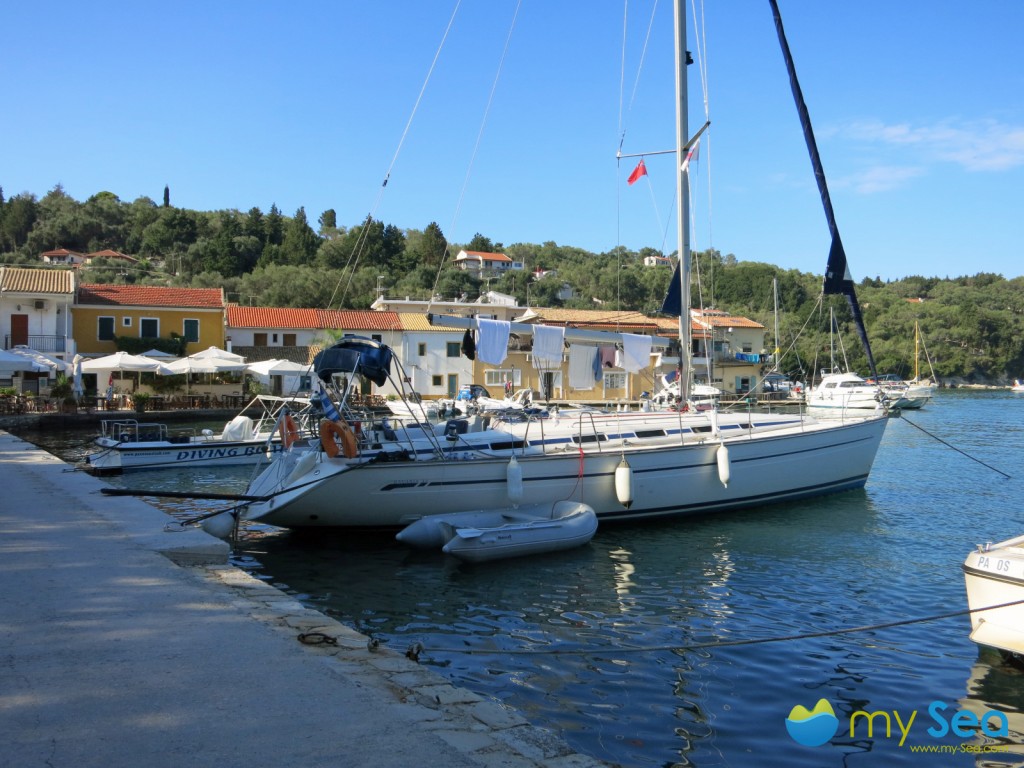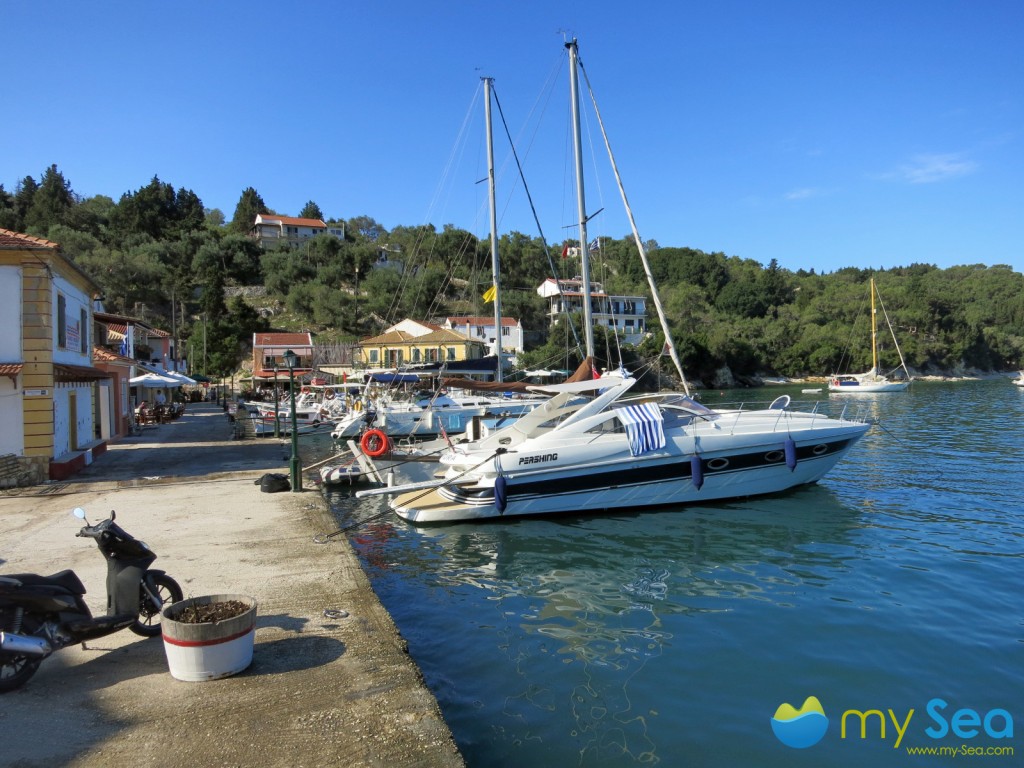islands Paxos and Antipaxos
(Part1)
If you ask people who know the Ionian Sea about their favourite destinations, then most will probably mention Paxos and Antipaxos. Located between Corfu and Lefkada, the islands are perfect for nature lovers. The green of the olive trees, cypresses and pine trees is a strong contrast to the turquoise colours of the crystal clear sea. The island is opposite the village of Parga on the mainland and is about 10 km long and 2 km wide. Olive trees are still cultivated in Paxos and when pressed cold produce an intensive and delicious oil. But nowadays tourism is the main source of income for the island’s population. And that also includes, naturally, yachts, which call in at the islands in their hundreds especially in summer.
Paxos doesn’t have an airport and can, therefore, only be reached by ferry or your own boat. Although the island has been spared mass tourism on the whole, in the summer months entire legions of boating and inland tourists are drawn to it. Nevertheless, the island has retained most of its original charm and character. It is less hectic here than in Corfu, contact with the locals seems more personal. The prices in Paxos are slightly higher than on the other islands. This is also reflected in the mooring fees at Gaios port. While most Greek harbours charge very little or nothing for mooring, they charge 23 euros for a 14 m yacht in Gaios. If you berth alongside, you have to pay 30% more. Water and electricity has to be paid extra. That is quite a lot by Greek standards.
The west coast of the island is steeper and more rugged than the east. When the weather is calm, interesting caves are just waiting to be discovered between the steep sloping cliffs. Just off the coast you will find monoliths bizarrely shaped by the sea and the wind. The east coast is comparatively flatter and has many small beaches, which slope gently into the blue sea. There are also a number of sheltered bays and harbours.
Yachts can moor at the following places in Paxos:
Lakka Bay:
Lakka Bay in the north-east of the island of Paxos is surrounded by olive trees and pine trees giving shade. The water is turquoise and as clear as glass. This picturesque place is often overrun in the season but it is still a very attractive destination.
In the bay there are two small beaches (sand and gravel), which are not only popular with children. Lakka is the second largest settlement in Paxos and very lively in summer as not only yachties but also many inland tourists visit the village. There is a large selection of bars and taverns as well as three supermarkets, two bakeries and an ATM.
Mooring options in Lakka Bay:
Most yachts swing on the hook in the bay. The sea bed is sandy with several seaweed patches. The water in the bay is between 2 and 3.5 m deep. You can also anchor at the mouth where the water is 5-7 m deep. It gets shallower towards the shore.
A few yachts can also more at the quay in Lakka. In the south-east area new mooring rings have been cemented into the quay. Yachts can also moor here with a bow anchor and stern lines. However, it is quite shallow at the quay and they need to keep to a minimum distance of about 2 m.
If you don’t know where you are going to moor exactly then you should sound the depth of the site and, if necessary, moor bow-to.
On the east side a raised mole is in the bay. If you decide to drop anchor towards the south, you can moor stern-to at the mole. There are no mooring rings but you can put a bowline around the rocks. Boats are also better protected here from swell.
To the west of the small jetty for excursion boats, a few yachts with a draught of up to 1.4 metres can moor here with a bow anchor and stern lines.
Some yachts also moor on the west side of the bay with shore lines. But you need to pay attention here to the depth of the water.
Part 2 will follow soon.



